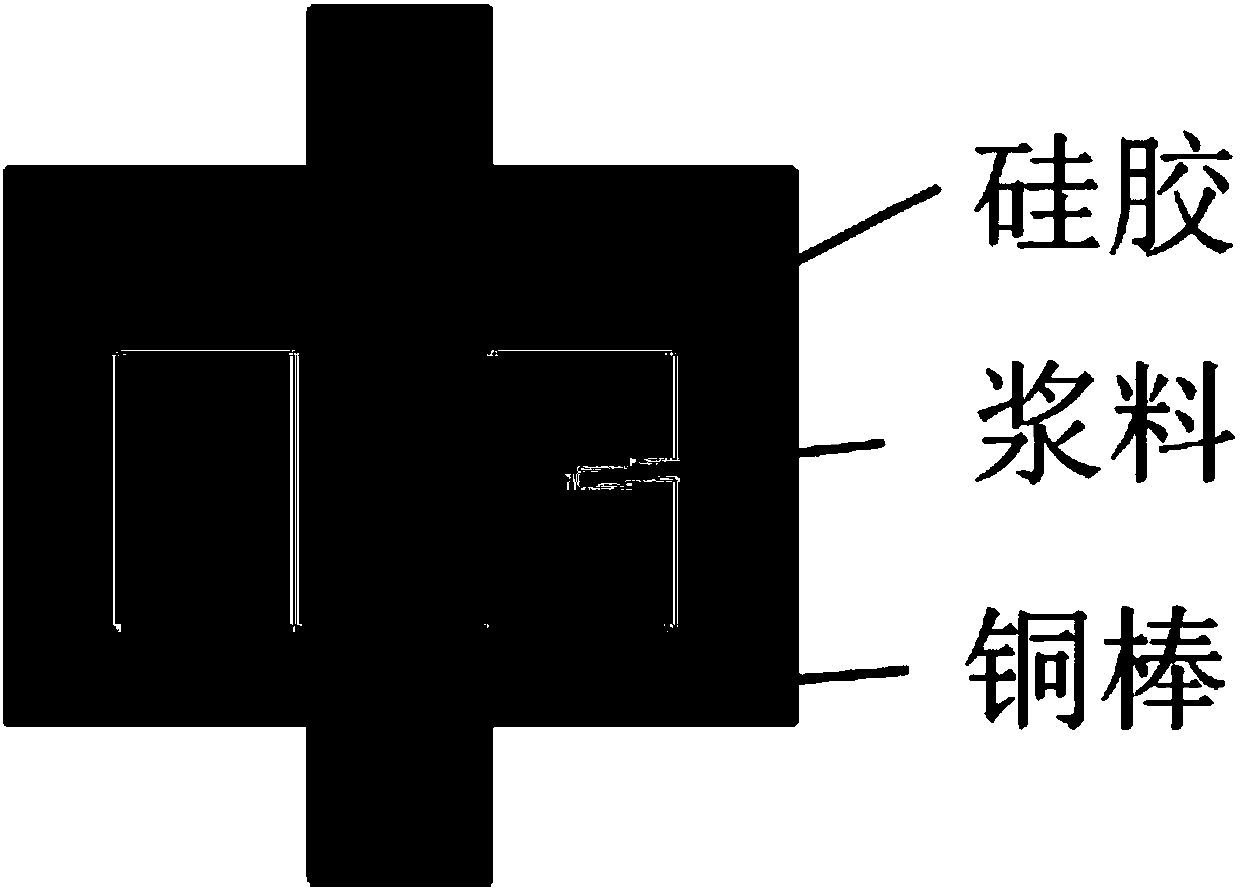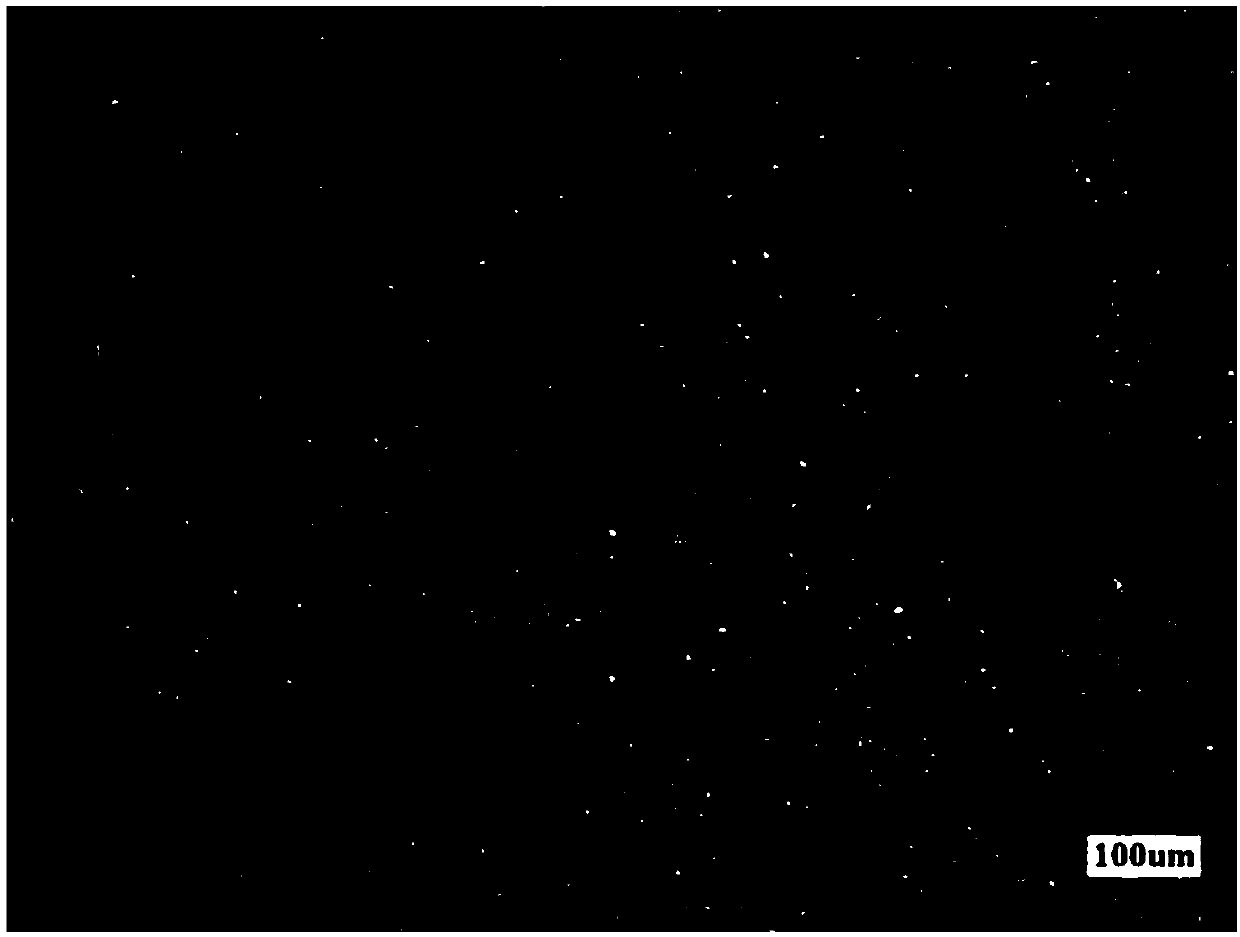Radial-structured tubular porous ceramic and preparation method thereof
A porous ceramic and radial technology, which is applied in the field of tubular porous ceramics and its preparation, can solve the problems of difficult demoulding and unfavorable continuous production, and achieve the effects of low equipment requirements, environmental friendliness and wide application prospects
- Summary
- Abstract
- Description
- Claims
- Application Information
AI Technical Summary
Problems solved by technology
Method used
Image
Examples
Embodiment 1
[0038] A method for preparing tubular porous ceramics with a radial structure, comprising the following steps:
[0039] (1) Using 7.5 μm SiC powder as raw material, add 0.6% dispersant sodium carboxymethyl cellulose and 5% sintering aid Al 2 o 3 , adding deionized water to prepare a ceramic slurry with a solid phase content of 20vol%, and ball milling for 30 hours;
[0040] (2) The slurry after ball milling was stirred and degassed in vacuum for 20 minutes and then poured into the cooling mold; the used cooling mold is as follows: figure 1 shown;
[0041] (3) Freeze the ceramic slurry at -40°C for about 10 minutes;
[0042] (4) Use a freeze dryer to vacuum freeze-dry the frozen green body at -55°C and 1Pa for a treatment time of 10 hours to obtain a SiC ceramic green body;
[0043] (5) Heat the green body in a resistance furnace at 600°C for 2 hours to remove organic matter, and then sinter it in an air furnace for 3 hours. The sintering temperature of the green body is 14...
Embodiment 2
[0046]A method for preparing tubular porous ceramics with a radial structure, comprising the following steps:
[0047] (1) Using 30 μm SiC powder as raw material, add dispersant sodium carboxymethyl cellulose with a mass ratio of 0.6% and sintering aid Al with a mass ratio of 5% 2 o 3 , adding deionized water to prepare a ceramic slurry with a solid phase content of 30vol%, and ball milling for 30 hours;
[0048] (2) The slurry after the ball milling was stirred and degassed in a vacuum for 20 minutes and then poured into a self-made mould;
[0049] (3) Freeze the ceramic slurry at -55°C for about 6 minutes;
[0050] (4) Use a freeze dryer to vacuum freeze-dry the frozen green body at -55°C and 1Pa for a treatment time of 5 hours to obtain a SiC ceramic green body;
[0051] (5) Heat the green body in a resistance furnace at 600°C for 2 hours to remove organic matter, and then sinter it in an air furnace for 3 hours. The sintering temperature of the green body is 1450°C to o...
Embodiment 3
[0053] A method for preparing tubular porous ceramics with a radial structure, comprising the following steps:
[0054] (1) with Si 3 N 4 powder as raw material, adding dispersant polysodium methacrylate with a mass ratio of 1%, with Y 2 o 3 and MgSiN 2 is a sintering aid, where Si 3 N 4 , Y 2 o 3 and MgSiN 2 The mol ratio is 93:1:5, then add deionized water to prepare a ceramic slurry with a solid phase content of 25vol%, and ball mill for 30 hours;
[0055] (2) The slurry after the ball milling was stirred and degassed in a vacuum for 20 minutes and then poured into a self-made mould;
[0056] (3) Freeze the ceramic slurry at -28°C for about 16 minutes;
[0057] (4) Use a freeze dryer to vacuum freeze-dry the frozen green body at -55°C and 1Pa for a treatment time of 15 hours to obtain Si 3 N 4 ceramic green body;
[0058] (5) Heat the green body in a pressure furnace at 2°C / min to 500°C, keep it for 2 hours to remove organic matter, and then heat it at 10°C / min...
PUM
 Login to View More
Login to View More Abstract
Description
Claims
Application Information
 Login to View More
Login to View More - R&D
- Intellectual Property
- Life Sciences
- Materials
- Tech Scout
- Unparalleled Data Quality
- Higher Quality Content
- 60% Fewer Hallucinations
Browse by: Latest US Patents, China's latest patents, Technical Efficacy Thesaurus, Application Domain, Technology Topic, Popular Technical Reports.
© 2025 PatSnap. All rights reserved.Legal|Privacy policy|Modern Slavery Act Transparency Statement|Sitemap|About US| Contact US: help@patsnap.com



